Once upon a time, before the Major Cycleways programme and before the creation of Te Ara Ōtākaro Avon River Trail, there were few off-road options for recreational cyclists in Christchurch (other than the mountain bike tracks). But there was the Little River Rail Trail.
The trail initially started at Motukarara, taking the route of the old railway line past Te Waihora / Lake Ellesmere and Birdlings Flat and on to Little River. Later, it was extended through Lincoln and Prebbleton to the outskirts of Christchurch city in Hornby. Now, with the completion of the Little River Link alongside the Southern Motorway a few years ago, you can cycle all the way from the centre of the city to Little River.
The trail is about 55 kilometres long, so most people can easily cycle the whole trail in one day. However, there are various access points along the way if you want a shorter ride, and accommodation is available at Little River for those wanting to cycle the full trail and back again over two days. Officially it’s a grade 2-3 ride (easy to intermediate), but it’s not at all difficult at any point.
I’ve had variable experiences with the trail in the past. I found it a great introduction to cycling on gravel, and the café and gallery at the Little River end are fantastic. But, as with all rail trails, there are some long boring bits and it’s very exposed to the elements. It can be scorching hot in summer and there’s no protection from the winds.
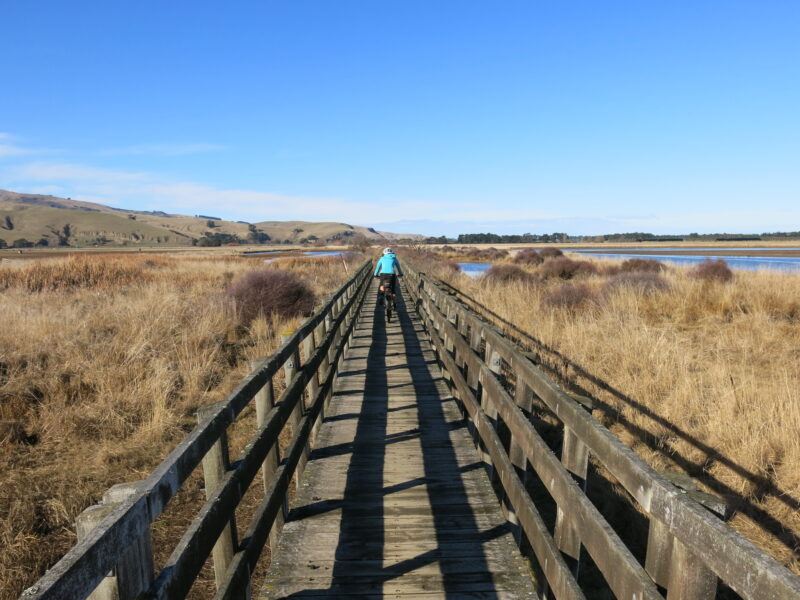
When my husband and I were training for a big ride, we decided to do the return trip from our home in north Christchurch – a 126-kilometre trip. We were unlucky to get a head wind most of the way to Little River, and then the wind changed, and we had a head wind all the way home. I vowed to never the cycle the trail again.
But, this winter, looking for somewhere different to ride, I decided to give it another go.
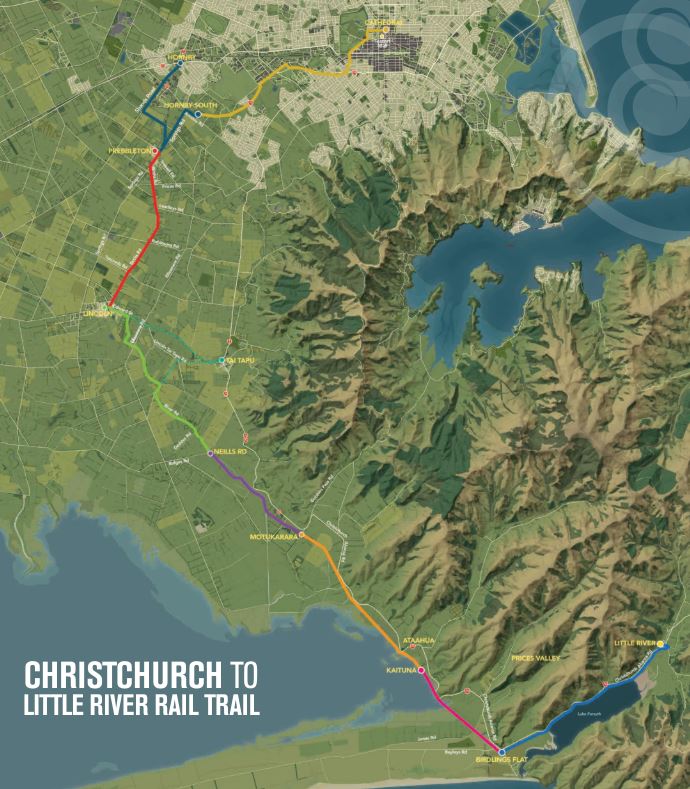
The Little River Link will take you through Hagley Park and the quiet back streets of Addington to the shared path along the Southern Motorway. From there, you can connect up to Prebbleton and then the shared path along Birches Road to Lincoln. It’s easy urban riding and sealed the whole way. However, with limited time in the day, my husband and I decided to skip these bits and start our ride at Lincoln instead, parking up by the reserve in Liffey Springs Drive.
The route between Lincoln and Motukarara offers the most varied cycling because it doesn’t follow the straight path of the old railway line. Instead, it winds nearby through farmland and wetland areas, and alongside the Halswell River. It’s the most comfortable section to ride, with smooth surfaces that are a mix of fine gravel path, dirt track and sealed road.
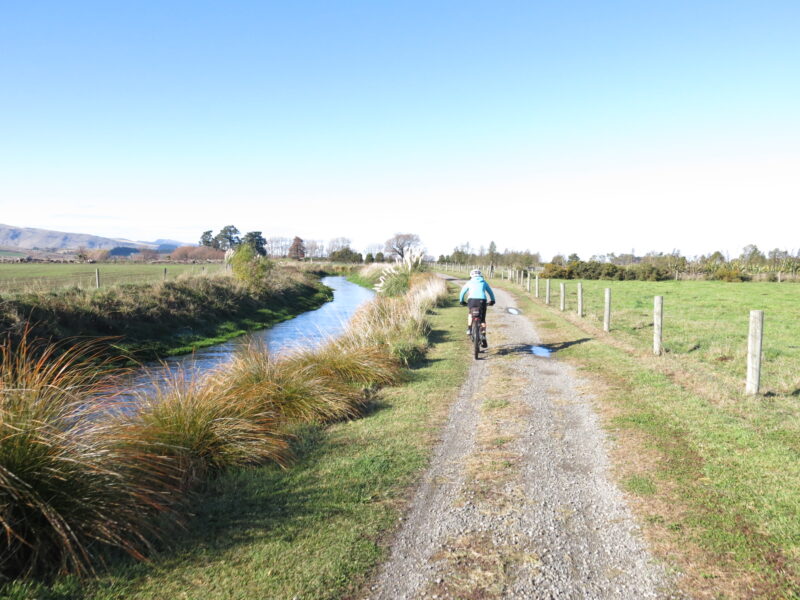
The trail joins the old railway line at Motukarara, where the original station building is still standing. It’s a lovely sunny spot and the perfect place to take a break. This was the original starting point of the trail when it opened in 2006. Judging by the cars in the car park, it is still a popular place to start today.
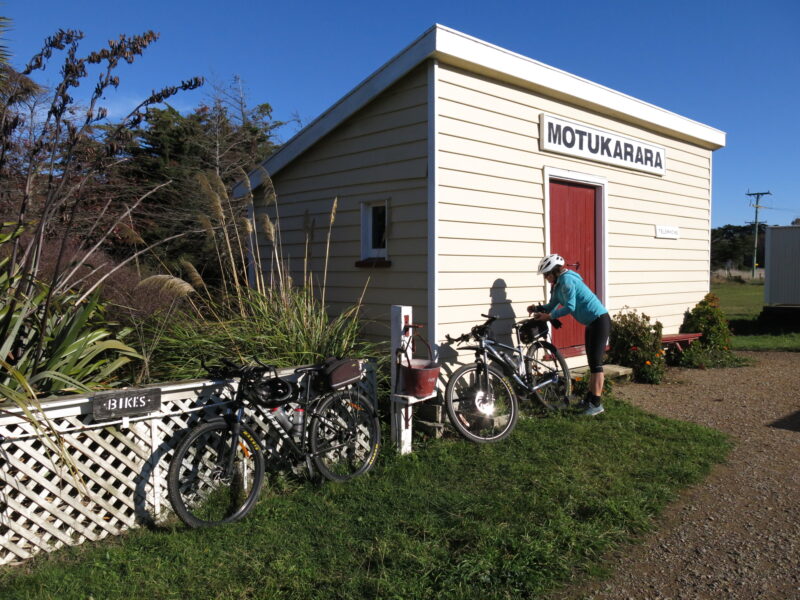
From Motukarara, the trail takes a long straight route all the way to the turn-off to Birdlings Flat. It’s a bumpy gravel track and one of the more exposed sections so it can be less enjoyable to cycle. But it is a scenic ride.
For much of the way, this section of the trail travels along the eastern edge of Te Waihora / Lake Ellesmere, which is home to a wide variety of birdlife. The lake is of cultural significance to Ngāi Tahi as an important site for gathering food and resources and was originally known Te Kete Ika o Rākaihautū (the fish basket of Rākaihautū). Over time, the health of the lake has declined – in large part due to increasing agricultural activity – and Ngāi Tahu and Environment Canterbury are jointly managing work to restore it.
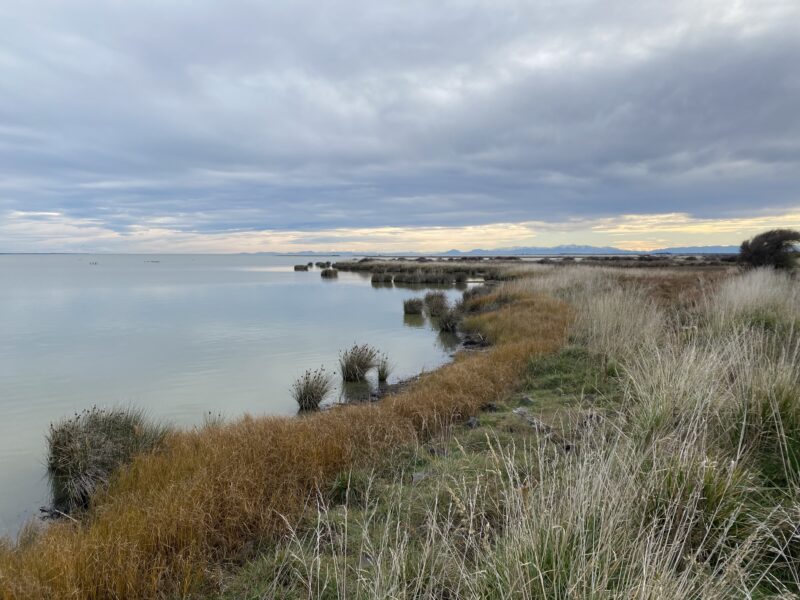
From the trail, there are magnificent views across the lake to the Southern Alps, best seen when cycling in the other direction (back to Motukarara), or from the Kaituna Quarry Reserve. The old quarry site stands out as a small rocky hill by the edge of the lake in otherwise flat countryside. There’s an old brick building onsite, once used to store explosives, and the remains of old gun emplacements.
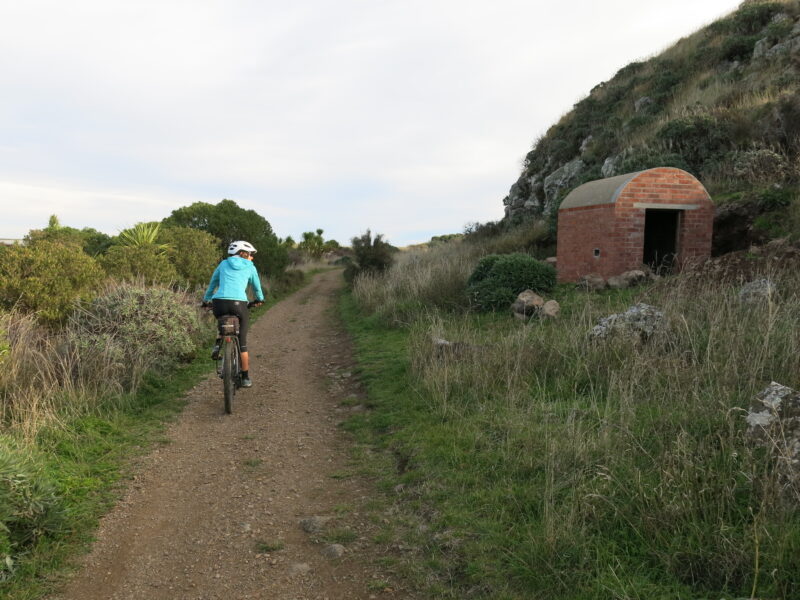
Birdlings Flat is an interesting destination in itself, and it’s well worth making the short detour off the trail to the coastal settlement (just a kilometre away along a sealed road). With wild seas pounding the pebble beach, it’s well-known for its agate gemstones. One of the local residents displays his private collection in a small gemstone and fossil museum you can visit for free – there will be a yellow sign on the settlement’s main road if it’s open.
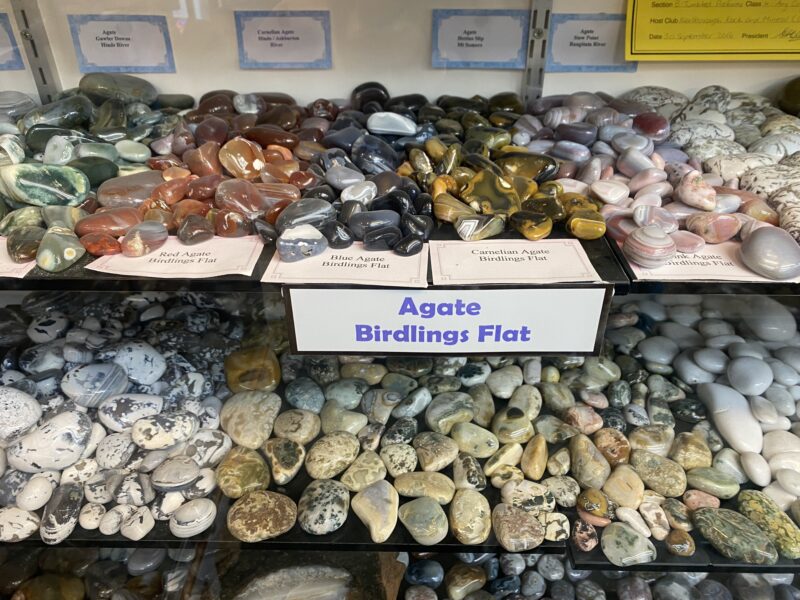
The eastern side of the settlement is bounded by the hills and the sea outlet for Te Roto o Wairewa / Lake Forsyth. The shingle channel is frequently closed (as it was when we visited) due to the sea washing up waves of stones, and it needs to be bulldozed open from time to time.
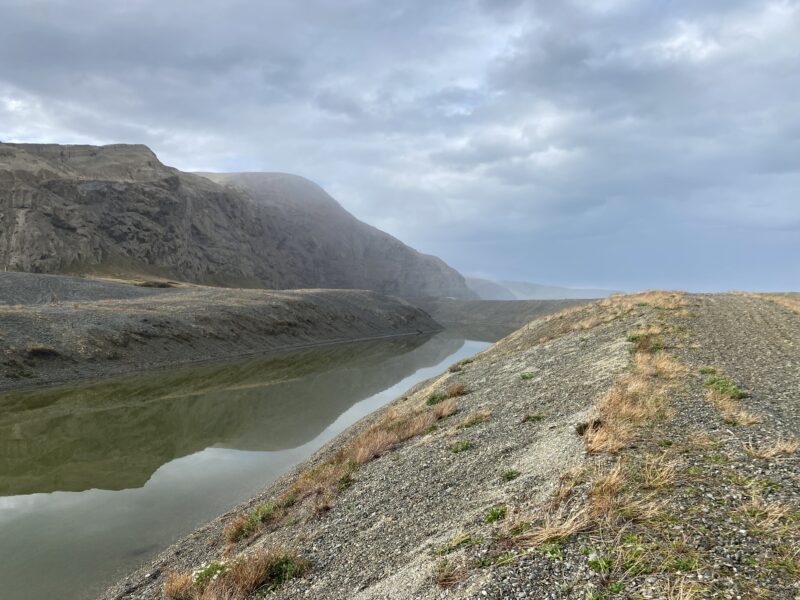
To the west, the Kaitorete Spit extends for 27 kilometres between the sea and the southern edge of Te Waihora / Lake Ellesmere. The spit is home to a scientific reserve (several endangered plant and animal species live here) and the Tawhaki National Aerospace Centre, a partnership between the government and local rūnanga.
We didn’t have time to linger in Birdlings Flat on this ride, so we made a separate trip, returning to stay a couple of nights a few weeks later. We spent a day cycling along the Kaitorete Spit (and back) to just short of the outlet for Te Waihora / Lake Ellesmere (also closed). The road is sealed for the first five kilometres and gravel for the rest of the way. Some parts were a bit lumpy, but we enjoyed exploring somewhere new, and I suspect the 52-kilometre trip would be a lot less comfortable by car.
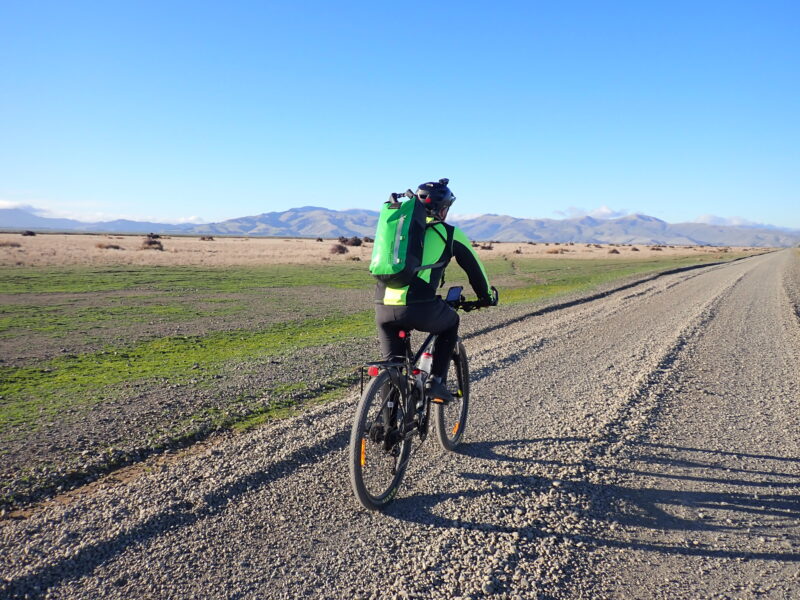
The final stretch of the Little River Rail Trail from Birdlings Flat heads east along the old railway embankment between the main road and Te Roto o Wairewa / Lake Forsyth. Because it’s close to the hills, it doesn’t get a lot of winter sun, which made for a cold (and sometimes mucky) ride. It’s better in summer, although you can encounter a strong head wind as you cycle by the lake. There’s access to the lake at Caton’s Bay but, as with Te Waihora / Lake Ellesmere, the water quality is poor and it’s susceptible to algal blooms.
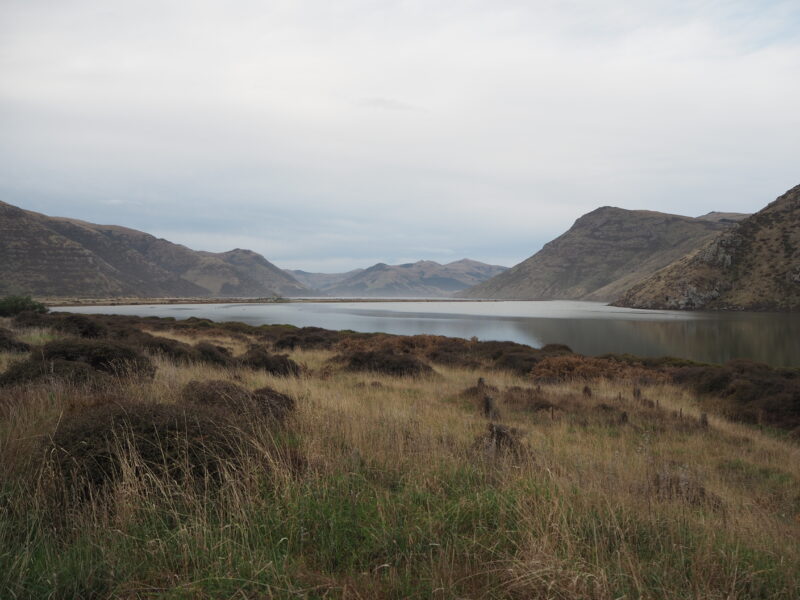
The reward for cycling to Little River is good food and coffee at the Little River Café and Store. Better still, the café connects to the wonderful Little River Gallery, which showcases New Zealand artists and sells a wide selection of New Zealand-made jewellery, crafts, paintings, books and gifts. If you’re staying overnight, there’s silo accommodation next door and various other private cottage options.
But, after a late lunch and a browse around the gallery, we turned around and headed back to Lincoln. Apart from a puncture going back through Motukarara, it was a good day out, with little wind and plenty to keep us interested along the way. We will be back.
The practical stuff
- From the city, start at the Antigua Street Bridge and ride through South Hagley, crossing at Moorhouse Avenue to head through Addington along Grove Road. Follow the signs to the Southern Motorway path and on to Prebbleton and beyond. It’s well signposted as the Little River Link cycleway (and then the Little River Rail Trail) so you can’t go wrong.
- For a shorter ride, start at Prebbleton, Lincoln or Motukarara. There’s also access to the trail midway between Lincoln and Motukarara at Neills Road, and an alternate start point in Hornby at Shands Road.
- There are cafés and shops at Prebbleton and Lincoln, but nowhere else to get food and drink until you get to Little River.
- Public toilets are located at various spots near the trail, including in the towns, at the old Motukarara railway station and by the community hall in Birdlings Flat.

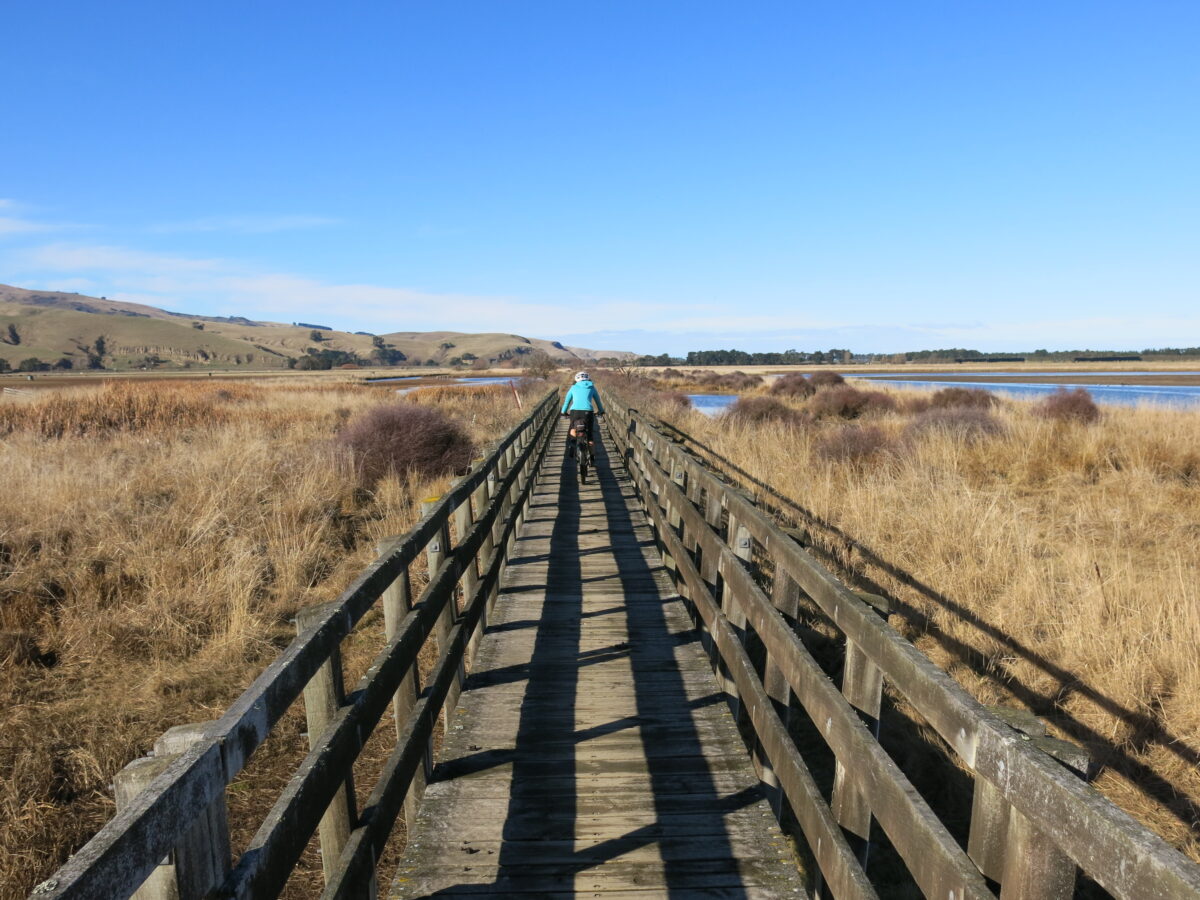
A winter ride also means you evade the leks of lake flies, mostly males trying to mate with one female. I carry a mesh bag which fits over my cycling helmet to tuck into my top to avoid swallowing these. DOC also is very involved in the management of Te Waihora/ Lake Ellesmere. A very good example of co-governance which has been in operation ever since the Ngai Tahu Settlement Act. The native vegetation around the lake is being restored. It was the Wahine Storm which ripped out all the eel grass beds which led to the decline of the water quality of the lake and a massive reduction of the geese numbers in addition to agricultural run off. The railtrail is actually providing a really good buffer zone along the lake edge. You need to carry a good supply of water as there is none which is potable between townships.